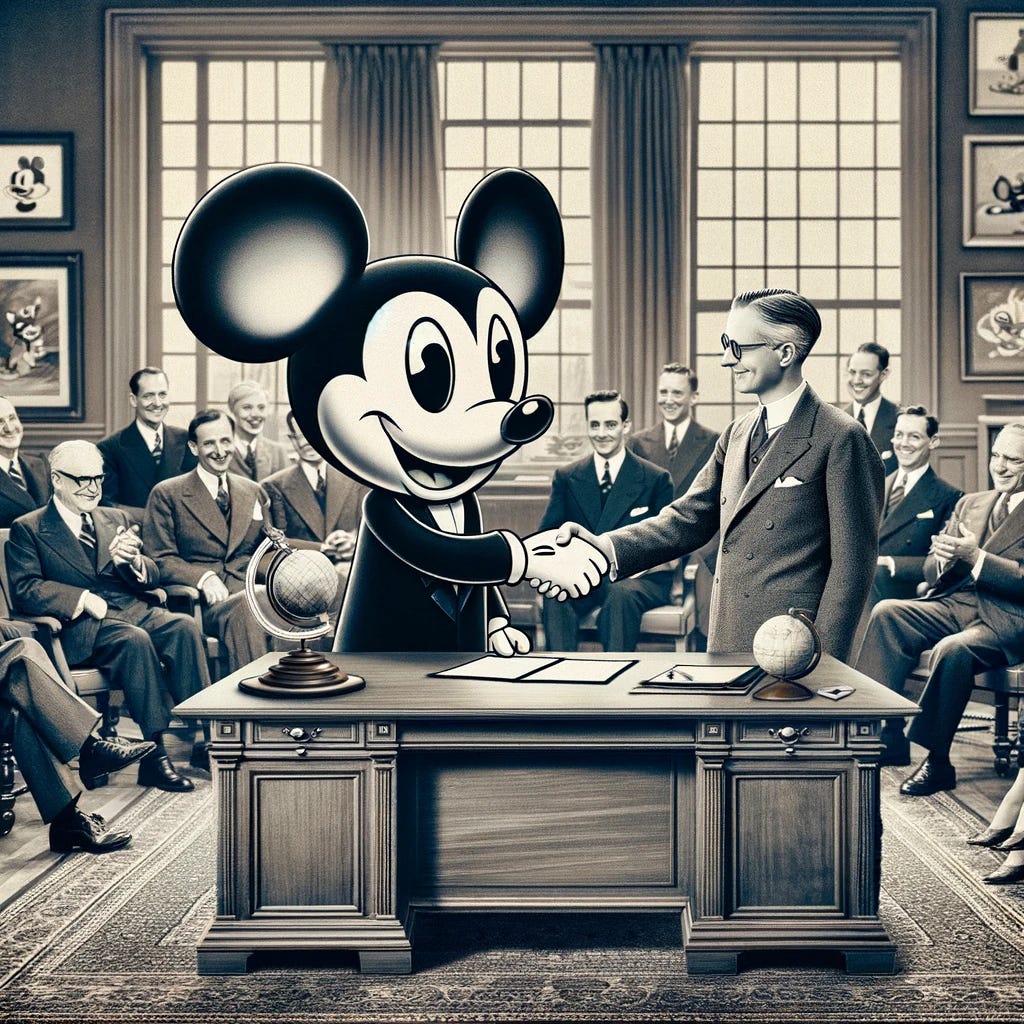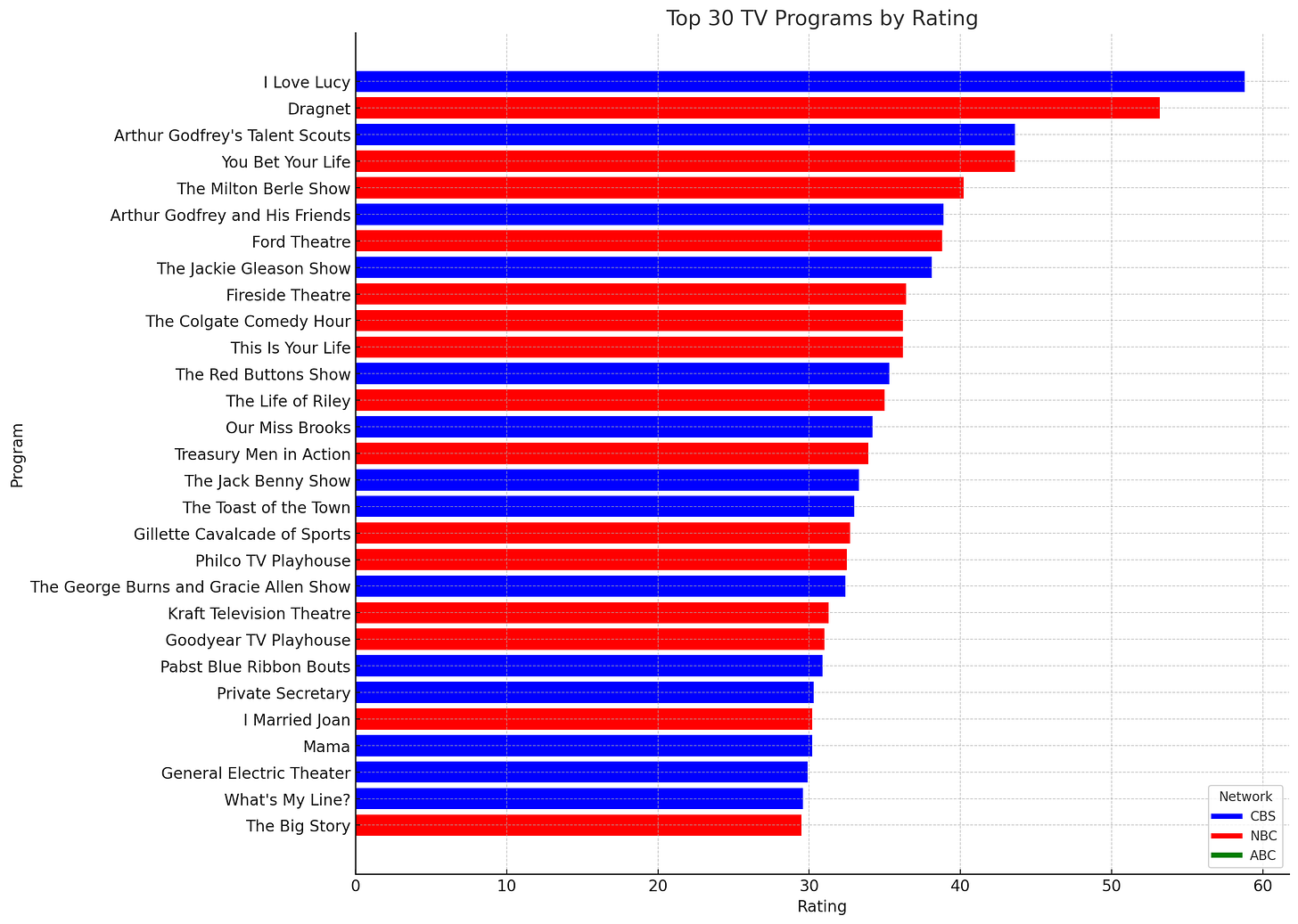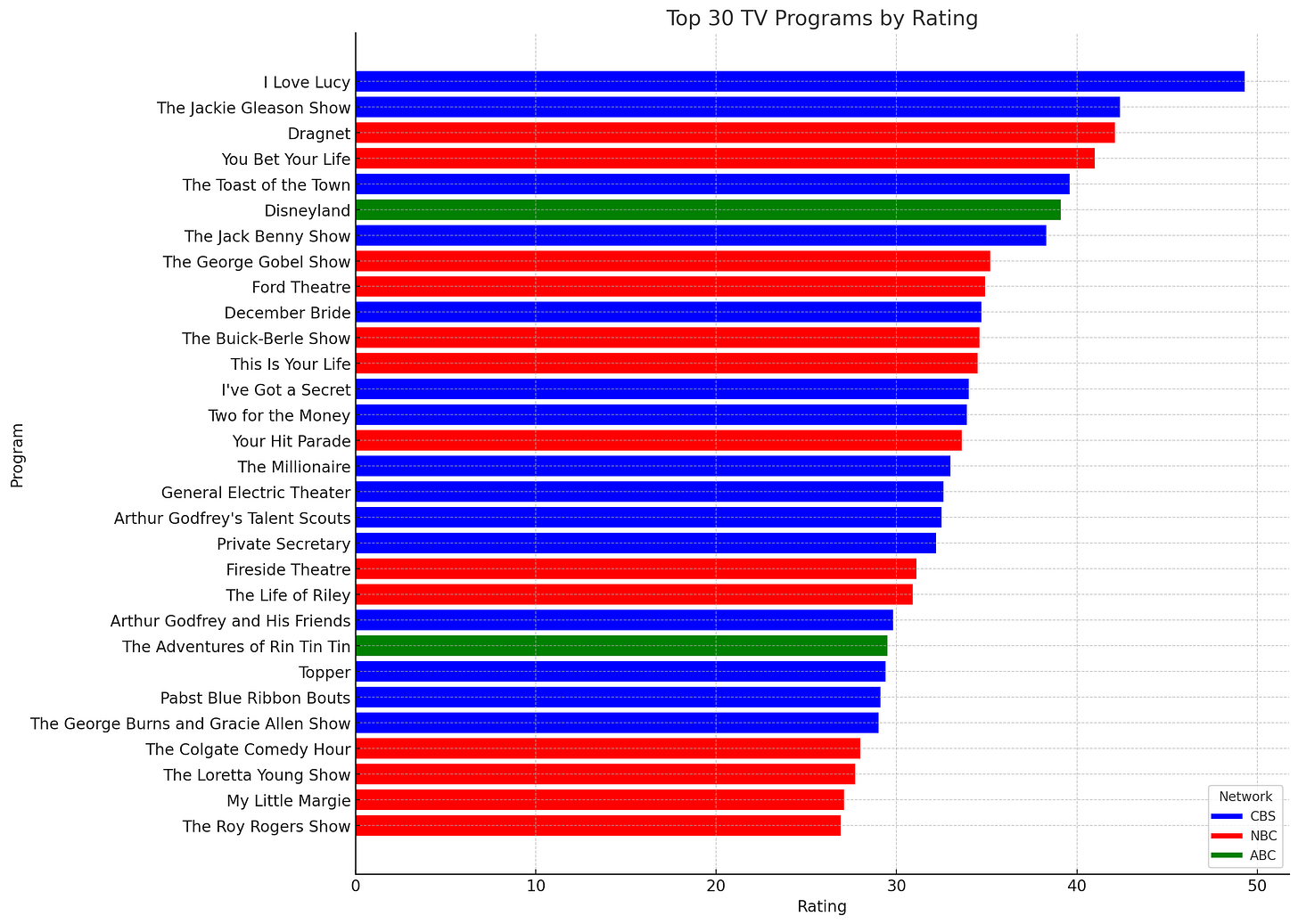The Show that Built Disneyland
How a struggling broadcast network partnered with Walt Disney to build a first of its kind amusement park
Note: Today’s post is focused on the business deal between Disney and ABC as a part of the founding of Disneyland. For the full story, I’d highly recommend Disney's Land by Richard Snow. Thank you to David Senra for pointing me towards this book via his podcast.
Did you know that ABC made 15 times its money on a $500,000 investment in Disneyland that helped the park open its doors? This deal, struck in 1954, not only provided the necessary funding for Walt Disney to complete his ambitious theme park project but also reshaped the entertainment business by showcasing the power of cross-promotion.
At the time, Walt Disney was constructing Disneyland but needed additional financing to see it through - CBS and NBC were interested in Disney’s show, but not in his harebrained scheme to build an amusement park. Meanwhile, ABC was lagging deeply behind those competitors in the battle for television viewers, jokingly called the “Almost Broadcasting Company” across the industry. In a bold move, Disney and ABC reached an agreement that would influence the trajectory of both companies.
ABC invested $500,000 and guaranteed an additional $4.5 million in construction loans in exchange for a 35% ownership stake in Disneyland and all the profit from food concessions for 10 years1. In return, Disney agreed to produce a weekly television series for the network for $50,000 per episode, which would entertain viewers and promote the new park2. This arrangement was a clever example of cross-promotion, highlighting the potential synergies between media production and physical entertainment.
To highlight how important this deal was for ABC, consider the ratings by network for 1953-1954 and then 1954-1955. ABC went from having zero shows in the top 30 to having the #6 rated show in a single year.
1953-1954
1954-1955
"Walt Disney's Disneyland" aired from 1954 to 1958, featuring a mix of original content and classic Disney material. Each episode of "Walt Disney's Disneyland" took viewers on journeys through the different themed lands of the park. Adventureland, Tomorrowland, Fantasyland, and Frontierland were all featured, with episodes that highlighted the park's themes. The show was a hit, engaging audiences and generating anticipation for the grand opening of Disneyland. The partnership culminated in the live broadcast of the park's opening day on July 17, 1955, which ABC turned into a major television event.
The deal benefited both parties. ABC gained a reliable source of family-friendly programming that strengthened its position in the television market. For Disney, the partnership provided the necessary funds to complete Disneyland and a valuable promotional platform for a brand new vision of a theme park, one that no other broadcast network was interested in.
Disney remained with ABC until 1961, having bought out the network's stake in Disneyland for $7.5 million the previous year, providing ABC with a 15-fold return on its initial investment. This early collaboration demonstrated the power of innovative business models and the potential for synergies across different segments of the entertainment industry. It also showcased Walt Disney's vision and understanding of the importance of cross-promotion in building successful brands.
The Disney-ABC partnership highlights a key point about the media industry: success often depends on the ability to deliver an audience to advertisers or to monetize that audience in new formats. By using television to promote Disneyland, Disney and ABC showed how media companies could create valuable synergies by cross-promoting physical assets and driving audience engagement to the struggling network.
In today's evolving media landscape, this lesson remains relevant. As companies face challenges like cord-cutting, streaming competition, and the constant battle for audience attention, the ability to create compelling content, build strong brands, and effectively monetize audiences is essential. The Disney-ABC partnership of the 1950s provides an example of how media companies can adapt and thrive in the face of change by finding creative ways to deliver value to audiences and advertisers.
The ownership structure post-financing was Disney 34.8%, ABC 34.8%, Western Printing 13.8%, and Walt Disney 16.5%.
Notably, the 7-year deal with a 1-year option at ~$5 million a year made the Disney - ABC transaction the biggest programming package in TV’s (short) history.






